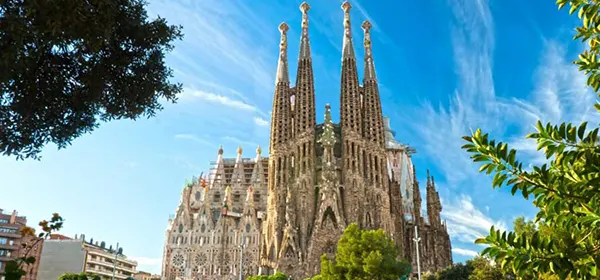
Sagrada Família (Barcelona): Gaudí’s Handcrafted Masterpiece
The Sagrada Família in Barcelona is one of the most recognisable landmarks in the world, symbolising both the creativity of Antoni Gaudí and the cultural richness of Catalonia. This monumental basilica has been under construction for more than a century and continues to fascinate millions of visitors each year with its blend of Gothic and Art Nouveau forms. In 2025, the Sagrada Família stands as both a living construction project and a UNESCO World Heritage Site, embodying Gaudí’s vision of architecture as a dialogue between nature, faith, and artistry.
Historical Background and Construction
The foundation stone of the Sagrada Família was laid in 1882 under architect Francisco de Paula del Villar, but Antoni Gaudí soon took over and transformed the project into something extraordinary. Gaudí dedicated over 40 years of his life to the basilica, with the last 15 years devoted exclusively to its design and supervision. After his death in 1926, the construction continued according to his plans, though with numerous challenges including the destruction of original models during the Spanish Civil War.
Despite setbacks, the work persisted, relying on both private donations and modern technological advances. Computer-aided design and 3D printing have accelerated the pace of progress in recent decades. By 2025, most of the basilica’s structure is complete, with only the finishing touches on the central towers pending. The final completion is projected within this decade, marking an end to a journey of nearly 150 years.
The basilica is not only a religious building but also a cultural monument of Spain, attracting more than four million visitors annually. Its ongoing construction symbolises continuity, faith, and innovation across generations.
Gaudí’s Vision and Symbolism
Gaudí’s approach was deeply rooted in both spirituality and nature. He intended the basilica to be a “Bible in stone,” where every façade and interior detail carries symbolic meaning. The Nativity Façade, for example, celebrates the birth of Christ with intricate carvings of flora, fauna, and biblical figures. The Passion Façade, in contrast, represents the suffering and sacrifice of Jesus with stark, angular forms.
The interior columns are designed to resemble trees branching towards the sky, creating the sensation of walking through a stone forest. Natural light filters through stained glass windows, bathing the nave in colours that shift throughout the day. These effects combine faith with the organic beauty of the natural world, which Gaudí considered inseparable from divine creation.
Every detail, from the turtle-shaped bases of columns to the symbolism of geometric shapes, is deliberately chosen. Gaudí saw the basilica as a living lesson in Christian theology and as a physical manifestation of harmony between man, nature, and God.
Architectural Features of the Basilica
The Sagrada Família is renowned for its towering spires, elaborate façades, and innovative structural solutions. Once complete, it will feature 18 towers: 12 dedicated to the apostles, four to the evangelists, one to the Virgin Mary, and the tallest to Jesus Christ, which will make it the highest church building in the world at 172.5 metres. This height was chosen intentionally, ensuring that the basilica remains one metre lower than Barcelona’s Montjuïc hill, out of respect for nature’s supremacy.
The façades serve as a visual catechism: the Nativity Façade is already completed and a UNESCO-listed treasure; the Passion Façade reflects stark modernist expression; while the Glory Façade, still in progress, represents the path to salvation. Each element serves not only an aesthetic but also a spiritual role in Gaudí’s design.
Inside, the basilica’s acoustics and natural light create an awe-inspiring environment. The stained glass windows, designed by artist Joan Vila-Grau, were installed over recent decades and now complete the experience envisioned by Gaudí. The mixture of colour, space, and form continues to captivate both architects and tourists worldwide.
Modern Technology in Construction
The continuation of Gaudí’s vision has been made possible by advances in digital technology. 3D printing, computer modelling, and laser scanning have been crucial in interpreting Gaudí’s incomplete sketches and plaster models. These tools allow architects to build structures faithful to the original concept, even in cases where exact details were lost.
Contemporary stone-cutting and prefabrication techniques have also accelerated the work significantly. Whereas construction in Gaudí’s time relied heavily on manual labour, modern tools reduce errors and shorten timelines, ensuring that the complex geometries of the basilica can be realised with precision.
Despite modern interventions, the project continues to respect Gaudí’s original vision, maintaining its character as both a historic monument and a living architectural experiment. This combination of tradition and technology ensures the basilica’s authenticity while allowing completion in the near future.
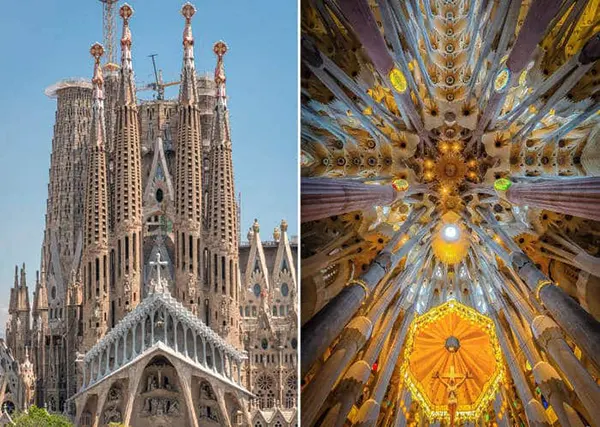
The Sagrada Família Today
In 2025, the Sagrada Família is not only a major tourist attraction but also an active place of worship. It was consecrated as a basilica by Pope Benedict XVI in 2010 and continues to host religious ceremonies alongside its role as a cultural landmark. Its dual nature as a house of faith and a global icon enhances its significance in modern Barcelona.
The basilica plays a vital role in the local economy, with ticket sales funding ongoing construction. Beyond tourism, it serves as a symbol of identity for Barcelona and Catalonia, embodying both the artistic spirit and resilience of the region. Local and international visitors alike view it as a monument to perseverance and creativity.
As completion nears, the Sagrada Família stands at a crossroads between history and future. Its near-finished form reflects centuries of devotion, while its finalisation promises to fulfil Gaudí’s dream of a complete masterpiece for generations to admire.
Legacy of Antoni Gaudí
Antoni Gaudí’s influence extends far beyond the Sagrada Família. Known as the master of Catalan Modernism, his architectural language has inspired architects and artists across the globe. His integration of natural forms, engineering innovation, and deep symbolism remains unique in architectural history.
The basilica has become a focal point for discussions on cultural heritage, conservation, and architectural innovation. Its construction challenges conventional definitions of historical monuments by being simultaneously ancient and modern. The preservation of Gaudí’s legacy is ensured not only through the building itself but also through global recognition of his genius.
In the twenty-first century, Gaudí’s Sagrada Família stands as a reminder that architecture can embody both artistic brilliance and spiritual devotion. Its continued construction serves as proof that cultural treasures can span generations and still inspire wonder in the modern world.
Popular articles
-
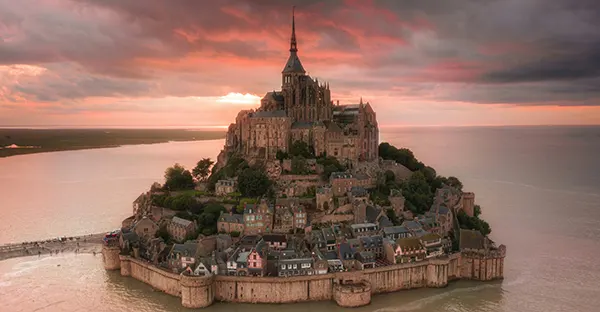 Mont-Saint-Michel (France): the abbey island shaped by tides
Mont-Saint-Michel (France): the abbey island shaped by tidesMont-Saint-Michel is one of the most distinctive historical sites in …
-
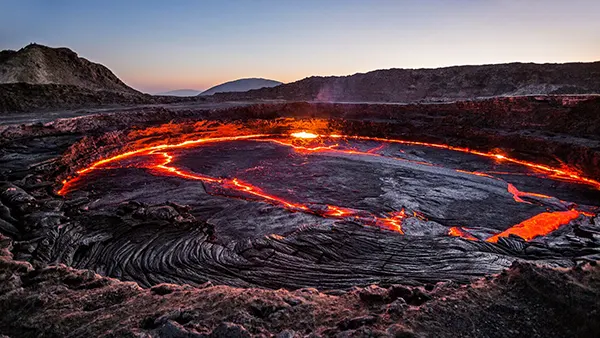 Depression Danakil: Ethiopia’s Fierce and Haunting Landscape
Depression Danakil: Ethiopia’s Fierce and Haunting LandscapeThe Danakil Depression in Ethiopia is often described as one …
-
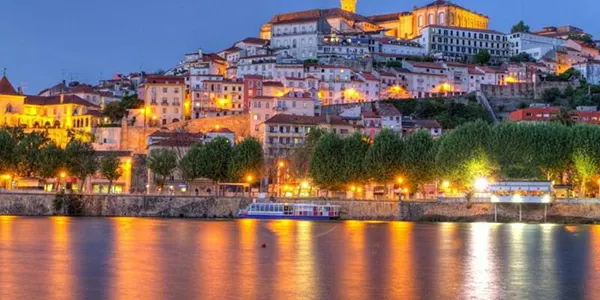 Coimbra, Portugal — A Student City Shaped by Centuries of Academic Tra...
Coimbra, Portugal — A Student City Shaped by Centuries of Academic Tra...Coimbra stands as one of Portugal’s most influential cultural and …
